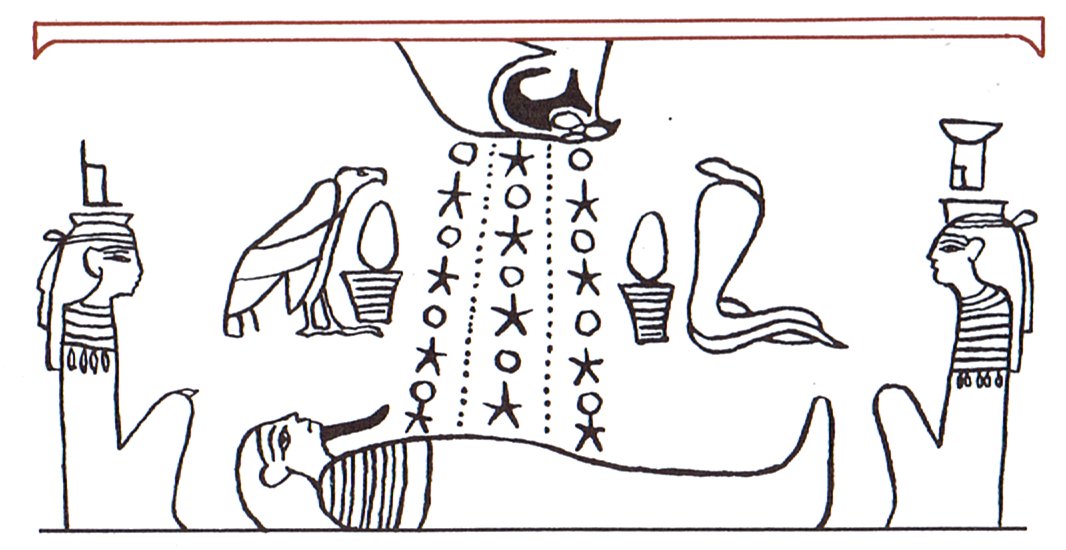Now we have additional information from the ancient Egyptian sky:
Taweret (right) is close to the axle of the earth and I therefore guess that the 'package' of four 'rays' from above (in front of her) represents this 'central pillar'. Each such 'ray' will then 'stand for' (be a 'standard' of) a quarter of the 'earth', a 'Bacab'. The snake at left of the 'central pillar' presumably represents the path of the sun during the year. I find another picture in Wilkinson which affirms the connection between a snake and what he suggests are the heads of the four sons of Horus (the sun god seen as a falcon):
Another picture (from Wilkinson) suggests that 'rays' of a divine nature are emanating from Horus:
There are three 'streams' of 'stars' and 'suns' from the forehead of the Horus falcon. And miraculously each 'star' and 'sun' unite to become 'body' and 'head' of 'people'. Life is the result of these 'rays'. The sign on top represents the sky and is used (like most pictures in ancient Egypt) as a hieroglyph. Some variants of hieroglyphs with pictures within the 'sphere' of sky, earth and water are reproduced in Wilkinson:
No. 4 (sic!) represents the sky supported by the 'central axle', the four 'Bacabs', one for each quarter of time-space. Each one of these four 'pillars' is supporting the sky during one phase, delivering the 'rule' to the next one at a 'cardinal' point. Between these 'pillars' there is 'life' ('vai-ora') streaming from above. That is my 'picture' (provisional interpretation) of these pictures. |



